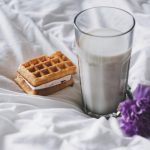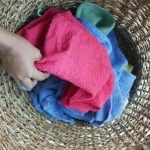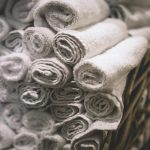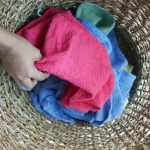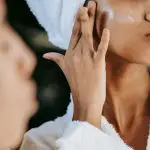Can you name these 10 unique weaves that will elevate your textile knowledge to a whole new level?
From the classic Herringbone to the intricate Jacquard and the luxurious Satin, mastering these weaves will give you a deeper understanding of fabric construction.
Each weave has its own distinct pattern and texture, making them essential for anyone seeking expertise in the world of textiles.
By familiarizing yourself with weaves like Waffle, Twill, Piqué, and others, you'll gain a comprehensive understanding of the diverse techniques used in creating different fabrics.
Whether you're a seasoned textile enthusiast or a budding connoisseur, recognizing these 10 unique weaves is a valuable skill that sets you apart in the realm of fabric knowledge.
Key Takeaways
- Herringbone Weave is a classic V-shaped weaving technique that creates a tight, dense fabric with a unique zigzag pattern.
- Waffle Weave creates a raised, grid-like pattern resembling a waffle and is ideal for towels, robes, and blankets due to its excellent breathability and absorbency.
- Jacquard Weave is known for its intricate patterns and complex designs achieved through a special weaving process, making it popular in high-end fashion and home decor.
- Leno Weave has an open, lacy texture with twisted warp threads, making it suitable for lightweight scarves and modern apparel accents.
Herringbone
Can you identify the distinct features of the herringbone weave?
Herringbone is a classic V-shaped weaving technique that creates a distinctive zigzag pattern resembling the skeleton of a herring fish. The technique involves weaving pairs of yarn together in a repeating V or zigzag pattern to form the herringbone design. This weaving method creates a tight, dense fabric with a unique visual texture.
In textile design, herringbone patterns are widely used to create garments, upholstery, and home decor items. The herringbone weave is popular for its durability and ability to add a touch of sophistication to various textiles. It's commonly used in tweed fabrics, suits, and outerwear, adding a timeless and elegant appeal to the finished products.
Mastering the herringbone weaving technique requires precision and attention to detail. The careful arrangement of yarn in a distinct V-shape is essential to achieve the characteristic herringbone pattern. Understanding the intricacies of this weaving method allows designers and artisans to create stunning textiles with a classic and timeless aesthetic.
Waffle
Identify the distinct features of the herringbone weave, and now, let's delve into the unique characteristics of the waffle weave. The waffle weave is known for its distinctive fabric texture and garment construction. This weave creates a raised, grid-like pattern resembling the texture of a waffle, hence its name. The waffle weave is created by interlacing horizontal and vertical threads, resulting in a three-dimensional, honeycomb-like structure. It provides excellent breathability and absorbency due to its increased surface area, making it a popular choice for towels, robes, and blankets. The waffle weave also adds a luxurious and cozy texture to garments, making it ideal for loungewear and casual pieces.
| Feature | Description | Example |
|---|---|---|
| Texture | Raised, grid-like pattern | Honeycomb structure |
| Absorbency | Excellent due to increased area | Towels, robes |
| Breathability | Allows air circulation | Ideal for loungewear |
| Versatility | Adds luxurious texture to garments | Casual pieces |
The distinct texture of the waffle weave not only enhances the aesthetic appeal but also offers functional benefits, making it a versatile choice for various garments and household textiles.
Jacquard
Jacquard weaves are known for their intricate patterns and complex designs, achieved through a special weaving process that allows for textured visual motifs to be created.
With the ability to produce highly detailed and varied designs, jacquard fabrics are often used in high-end fashion and home decor.
The unique weaving technique of jacquard allows for a wide range of patterns and textures to be incorporated into the fabric, making it a popular choice for those seeking intricate and visually appealing textiles.
Intricate Woven Patterns
You can recognize intricate woven patterns, known as Jacquard weaves, by their elaborate and detailed designs. These weaves often feature complex geometric patterns and artistic designs, showcasing a high level of craftsmanship and attention to detail. Cultural influences and traditional weaving techniques play a significant role in the creation of these intricate patterns.
Jacquard weaves are known for their ability to incorporate a wide range of designs, from intricate florals to detailed geometric shapes. The weaving process allows for the creation of highly detailed and precise patterns, making Jacquard weaves a popular choice for luxurious fabrics and decorative textiles.
The intricate nature of these weaves adds a touch of sophistication and elegance to any design, making them a sought-after choice for those who appreciate the artistry of weaving.
Complex Fabric Designs
Recognize intricate woven patterns, known as Jacquard weaves, by their elaborate and detailed designs. These complex fabric designs are created using a Jacquard loom, which allows for the production of intricate patterns and designs, including brocades, damasks, and tapestries.
Modern applications of Jacquard weaves extend to high-end fashion, upholstery, and interior design, where these luxurious fabrics are highly sought after for their opulent look and feel.
The cultural significance of Jacquard weaves is vast, with historical ties to the production of elaborate textiles and tapestries in various cultures around the world. The Jacquard weaving technique has influenced the art of fabric design and production, making it an integral part of the textile industry.
Understanding the complexity and artistry of Jacquard weaves enhances your mastery of fabric design and appreciation for its cultural impact.
Textured Visual Motifs
When identifying textured visual motifs in Jacquard weaves, pay attention to the intricate and detailed designs that are characteristic of this weaving technique. Jacquard weaves are known for their ability to create unique fabric designs with visually appealing textures.
Here's what to look for:
- Intricate Patterns: Jacquard weaves often feature elaborate and detailed patterns, adding depth and dimension to the fabric.
- Textured Surfaces: These weaves create textured surfaces that can range from subtle to highly pronounced, providing a tactile element to the fabric.
- Visual Contrast: The technique allows for the incorporation of bold visual contrasts, enhancing the overall visual appeal of the fabric.
- Innovative Techniques: Jacquard weaves utilize innovative weaving techniques to achieve complex and visually stunning designs.
Twill
Twill is a weaving pattern that creates a distinctive diagonal ribbed texture in the fabric. This weaving technique results in a strong and durable material, making it popular for use in clothing, upholstery, and accessories.
The diagonal lines in twill fabrics provide a unique visual appeal and enhance the overall aesthetic of the finished product.
Diagonal Weaving Pattern
Identifying a diagonal weaving pattern, known as twill, can be achieved by observing the distinct diagonal lines created in the fabric. This weaving technique has modern applications while maintaining its traditional roots, making it a versatile choice for various designs.
When examining fabric, look for the following characteristics to identify a twill weave:
- Diagonal lines running from the bottom left to the top right or from the bottom right to the top left.
- A repeating pattern of raised and lowered threads, creating a distinct texture.
- Flexibility in creating different designs, such as herringbone and houndstooth.
- Commonly used in denim, suits, and upholstery due to its durability and stylish appearance.
Understanding these key features will allow you to recognize and appreciate the unique qualities of twill weaving patterns.
Strong and Durable Fabric
You can recognize strong and durable fabric through its distinct diagonal lines and raised texture, which characterize the twill weave. Twill weave patterns are formed by weaving the weft yarn over and under multiple warp yarns to create diagonal lines. This weaving technique enhances fabric strength and durability, making it resistant to wear and tear.
Twill fabrics are known for their resilience and ability to maintain their shape, making them suitable for long-lasting garments and sturdy home textiles. The diagonal pattern also gives the fabric a unique appearance, adding visual interest to the material.
Due to its durability and distinctive texture, twill is a popular choice for workwear, denim, and various types of upholstery. By understanding unique weave patterns like twill, you can appreciate the exceptional qualities of different fabrics.
Satin
Exploring the characteristics and uses of satin can help you distinguish it from other unique weaves. Satin is a luxurious fabric known for its smooth and shiny texture. Here are some key points to help you understand satin better:
- Satin Weave: Satin is woven using a satin weave, which creates the characteristic glossy surface on one side while leaving the other side dull.
- Luxurious Fabric: Satin is often associated with luxury due to its elegant appearance and soft, smooth feel against the skin.
- Versatile Uses: Satin is commonly used in clothing such as evening gowns, lingerie, and ties due to its lustrous finish. It's also used in bedding, pillowcases, and interior furnishings to add a touch of opulence to the decor.
- Care Tips: When caring for satin fabric, it's important to follow the care instructions as it can be delicate. Hand washing or using a gentle cycle on the washing machine is often recommended to maintain the fabric's sheen.
Understanding the unique characteristics and uses of satin can help you appreciate its beauty and choose it wisely for various applications.
Dobby
Frequently, you'll encounter dobby weaves in various types of fabric, adding texture and intricate patterns to the material. Dobby weaving techniques involve using a special loom to create small geometric patterns or extra texture in the fabric. It differs from the plain weave in that it raises and lowers the warp threads independently, allowing for more intricate designs. The fabric characteristics of dobby weaves include a slightly raised texture, fine details, and a more decorative appearance compared to plain weaves.
Dobby weave applications have expanded beyond traditional clothing and home textiles to modern adaptations. This unique weave is commonly used in shirts, dresses, and ties to create distinct patterns such as dots, checks, and stripes. Additionally, dobby fabrics are popular in upholstery, curtains, and table linens due to their ability to add visual interest to interior spaces.
In modern textile production, computerized and electronic dobby looms have increased the efficiency and versatility of dobby weaving techniques, allowing for even more intricate and complex patterns to be created. These modern adaptations have further expanded the creative possibilities of dobby weaves in the textile industry.
Piqué
Dobby weaves are just one example of unique fabric textures. Another notable weave is piqué, known for its distinctive raised patterns and texture. Piqué fabric features a raised, textured design that sets it apart from other weaves, making it a popular choice for various applications.
Some of its unique applications include creating breathable and absorbent textiles for polo shirts, dresses, and bedding. Piqué weaving techniques involve the use of a dobby loom or a Jacquard loom to create the raised patterns and textures.
Modern adaptations of piqué weaving have led to the development of innovative designs and applications. For example, using different yarns can achieve various textures, and incorporating stretch fibers enhances comfort and flexibility.
The versatility of piqué weaving allows for the creation of intricate and visually appealing designs. This makes it a sought-after choice for both fashion and home textiles.
Basketweave
Basketweave is a unique weaving pattern that differs from twill in its structure. You'll explore the distinct advantages of basketweave, such as its durability and stability.
Additionally, you'll learn about the historical significance of basketweave and its evolution over time.
Basketweave Versus Twill
You'll often find basketweave and twill weaves used in various fabrics for their unique textures and patterns. While both weaves are distinct in their own right, they serve different purposes and offer different aesthetic qualities.
- Basketweave Structure: This weave features a simple crisscross pattern, creating a checkerboard appearance. It's commonly used in upholstery, curtains, and clothing due to its durability and sturdiness.
- Practical Applications: Basketweave is often chosen for its ability to provide excellent breathability and a stable surface, making it ideal for items like tablecloths, dish towels, and tote bags.
- Twill Weave: Known for its diagonal parallel ribs, this weave creates a distinctive look with a subtle texture. It's frequently utilized in denim, tweed, and gabardine fabrics due to its characteristic drape and durability.
- Unique Characteristics: Twill weave offers a soft, draping quality and a visually appealing, diagonal pattern, making it popular for a wide range of clothing and home decor items.
Advantages of Basketweave
When choosing fabrics, consider the advantages of basketweave.
Basketweave offers excellent breathability and a stable surface, making it ideal for various items like tablecloths, dish towels, and tote bags.
The basketweave structure provides exceptional durability, as the weaving pattern creates a tight, dense fabric that's less prone to tearing or fraying. This durability makes basketweave fabrics well-suited for everyday use, ensuring that items made from this weave will remain in good condition for an extended period.
Additionally, the unique crisscross pattern of basketweave lends visual appeal to the fabric, adding an interesting texture and depth.
Its versatility allows it to be used for a wide range of products, from heavy-duty upholstery to delicate apparel, making it a highly sought-after weave in the world of textiles.
History of Basketweave
Although often overlooked, the history of basketweave holds a significant place in the evolution of textile weaving techniques. Basketweave techniques have been utilized for centuries, dating back to ancient civilizations. The evolution of basketweave designs has been a testament to human creativity and innovation, leading to the development of intricate patterns and varying textures.
Key historical moments have shaped the course of basketweave, including cultural exchanges and technological advancements. Through the centuries, basketweave has transitioned from a utilitarian craft to a celebrated art form, influencing and inspiring modern textile design.
- Ancient origins
- Cultural influences
- Technological advancements
- Transition to modern textile design
Leno
Identify the Leno weave by its distinct cross-cross pattern that creates an open, lacy texture in the fabric. Leno weaving techniques involve twisting adjacent warp threads to form an open shed, allowing the weft to pass through and create an intricate, airy pattern. This weave is known for its stability and stretch, making it ideal for lightweight fabrics and decorative elements. Leno weave variations and modern interpretations have expanded its creative applications, from delicate lace-like textiles to contemporary, architectural designs.
| Leno Weave Characteristics | Creative Applications |
|---|---|
| Open, lacy texture | Lightweight scarves |
| Twisted warp threads | Decorative window panels |
| Stable and stretchy | Modern apparel accents |
Exploring leno weave variations has led to innovative uses in fashion, interior design, and artistic expressions. By understanding the unique properties of the Leno weave, you can incorporate this technique into your projects to achieve a distinctive, textured look.
Honeycomb
You can recognize the Honeycomb weave by its distinctive hexagonal pattern, which adds depth and visual interest to the fabric. This unique weave is characterized by its interconnected hexagonal cells that create a three-dimensional effect.
- Design Inspiration: The honeycomb weave draws design inspiration from the natural structure of honeycombs, offering a modern and geometric aesthetic to textiles.
- Modern Applications: In contemporary fashion and interior design, honeycomb weaves are being used to create visually striking garments, upholstery, and home decor items.
- Functional Textiles: Due to its structural integrity, honeycomb weaves are often utilized in functional textiles such as sportswear, outdoor gear, and technical fabrics for their breathability and moisture-wicking properties.
- Interior Design Trends: Interior designers are increasingly incorporating honeycomb weaves into their projects, using them for curtains, wall coverings, and furniture upholstery to add texture and visual appeal to spaces.
The versatility of honeycomb weaves extends from design inspiration to modern applications, making them a popular choice for both functional textiles and interior design trends.
Frequently Asked Questions
What Are the Benefits of Using Different Weave Patterns in Textiles?
Using different weave patterns in textiles offers textile innovation, sustainability, and adds variety to fashion trends and interior design. They provide unique textures, visual interest, and can enhance the durability and functionality of fabrics.
How Do Different Weave Patterns Affect the Durability of the Fabric?
Different weave patterns affect fabric strength and durability. Tighter weaves like twill and satin increase durability by reducing abrasion and increasing tear resistance. Open weaves like leno provide breathability but sacrifice some durability.
Are There Any Specific Cultural or Historical Significance Associated With These Weave Patterns?
Cultural symbolism and historical significance are intricately woven into these patterns. Artisan techniques and traditional practices have been passed down for generations, preserving the rich cultural heritage and honoring the craftsmanship behind these unique weaves.
Can These Weave Patterns Be Replicated Using Modern Technology?
You can replicate these weave patterns using modern technology, but traditional vs. modern weaving techniques impact the unique weaves. These weaves have a significant impact on the textile industry, preserving cultural heritage and inspiring contemporary designs.
Are There Any Specific Care Instructions for Fabrics With These Unique Weave Patterns?
To maintain fabric with unique weaves, follow specific care instructions. Use gentle cleaning tips and preservation techniques to ensure longevity. Fabric maintenance is crucial for preserving the intricate patterns and textures of these weaves.
- Tetron Fabric for Marine Applications: Durability and Use Cases - June 18, 2025
- Tetron Fabric for Outdoor Furniture: Weather Resistance and Care - June 18, 2025
- Tetron Fabric for Wall Coverings: Style and Application Tips - June 18, 2025



